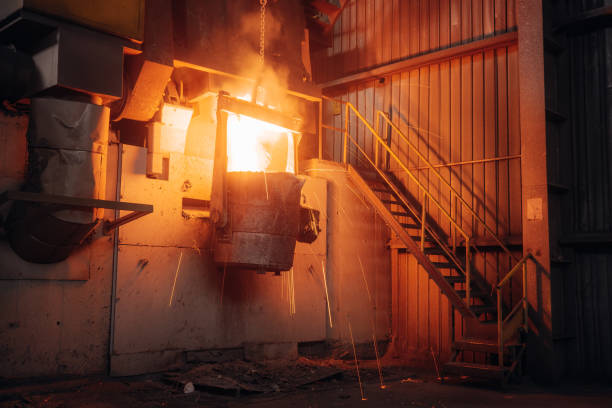Precision casting is a crucial manufacturing process for producing high-precision metal components with complex geometries, widely applied in aerospace, automotive, medical, and energy sectors. Different precision casting technologies (such as investment casting, die casting, ceramic mold casting, and resin-coated sand casting) each have unique characteristics. Selecting the appropriate process is vital for enhancing product quality and reducing costs. This article analyzes how to choose the most suitable precision casting technology from perspectives of material properties, component structure, cost-effectiveness, and surface finish requirements to ensure high performance and reliability.
- Major Precision Casting Technologies and Their Features
Before selecting a casting process, it’s essential to understand the advantages, limitations, and applications of different technologies:
- Investment Casting| CT4-CT6 | Ra1.6-6.3μm | Applicable Materials: Stainless steel, superalloys | Typical Applications: Turbine blades, medical devices, aerospace components | Advantages: High precision, complex structures, excellent surface finish | Limitations: High cost, long production cycle |
- Die Casting| CT6-CT8 | Ra0.8-3.2μm | Applicable Materials: Aluminum alloys, zinc alloys | Typical Applications: Automotive parts, electronic enclosures | Advantages: High efficiency, mass production capability | Limitations: Limited to non-ferrous metals, high mold cost |
- Ceramic Mold Casting| CT5-CT7 | Ra3.2-12.5μm | Applicable Materials: Superalloys, titanium alloys | Typical Applications: Aerospace engine components, large castings | Advantages: High-temperature resistance, suitable for large parts | Limitations: Complex process, relatively high cost |
- Resin-Coated Sand Casting| CT6-CT8 | Ra6.3-12.5μm | Applicable Materials: Cast iron, cast steel | Typical Applications: Hydraulic valve bodies, gears, automotive parts | Advantages: Low cost, suitable for small-medium batches | Limitations: Slightly inferior surface quality compared to investment casting |
- Lost Foam Casting| CT7-CT9 | Ra12.5-25μm | Applicable Materials: Cast iron, aluminum alloys | Typical Applications: Pump housings, machine tool components | Advantages: No mold removal needed, suitable for complex structures | Limitations: Rough surface, requires post-processing |
- How to Select the Appropriate Precision Casting Technology?
- Based on Material Properties
Superalloys/stainless steel (e.g., aircraft engine blades): Prioritize nvestment casting or ceramic mold casting to ensure high-temperature resistance and dimensional accuracy.
Aluminum/magnesium alloys (e.g., automotive structural parts): Die casting is suitable for mass production, while investment casting fits high-precision, low-volume parts.
Cast iron/cast steel (e.g., hydraulic components, gears): Resin-coated sand casting or lost foam casting offer better cost advantages.
- Based on Component Complexity
- Highly complex, thin-walled parts (e.g., turbine blades, precision gears): Use investment casting, capable of forming walls thinner than 0.5mm.
- Medium-complexity, small-medium parts (e.g., automotive engine blocks): Resin-coated sand casting or die casting are more cost-effective.
- Large castings (e.g., wind turbine components): Ceramic mold casting or lost foam casting are more suitable.
- Based on Surface Finish and Precision Requirements
- Ra≤3μm, high dimensional accuracy (e.g., medical implants, optical components): Must use investment casting.
- Ra≤5μm, medium precision (e.g., hydraulic valve blocks, pump bodies): Resin-coated sand casting or ceramic mold casting can meet requirements.
- Lower surface requirements, cost priority (e.g., agricultural machinery parts, hardware): Lost foam casting or conventional sand casting are more appropriate.
- Considering Production Volume and Cost
- Low-volume, high-value parts (e.g., aerospace components): Choose investment casting—though unit cost is high, it reduces machining expenses.
- Mass production (e.g., automotive aluminum wheels): Die casting offers highest efficiency with amortized mold costs.
- Medium-volume production (e.g., industrial valves, gears): Resin-coated sand casting provides the best balance of cost and quality.
III. Case Studies: Comparison of Different Casting Technology Selections
Case 1: Aircraft Engine Turbine Blades
Requirements: Nickel-based superalloy, complex cooling channels, surface Ra≤3.2μm.
Optimal Process: Investment casting(combined with ceramic shell technology) ensures high-temperature resistance and aerodynamic performance.
Case 2: Automotive Aluminum Transmission Housing
Requirements: Lightweight, medium complexity, annual production >100,000 units.
Optimal Process: High-pressure die casting balances production efficiency and cost.
Case 3: Hydraulic System Ductile Iron Valve Body
Requirements: High-pressure resistance, dimensional stability, low-volume customized production.
Optimal Process: Resin-coated sand casting ensures strength without expensive molds.
- Future Trends: Smart and Green Casting
With Industry 4.0 advancements, precision casting is evolving toward digitalization and intelligence:
- AI process optimization: Machine learning adjusts pouring temperature and cooling rates to minimize defects.
- 3D printed sand molds/investment patterns: Accelerate prototyping and enable more complex structures.
- Green materials: Bio-degradable binders and low-emission coated sands reduce environmental impact.
Conclusion
Selecting the right precision casting technology requires comprehensive consideration of material, structure, precision, and cost factors. For high-precision components, investment casting remains the gold standard; die casting is optimal for mass-produced aluminum parts; while resin-coated sand casting offers the best cost-performance ratio for small-medium volume iron/steel components. In the future, integrating smart and green technologies will further drive the manufacturing industry toward high-quality, sustainable development.

